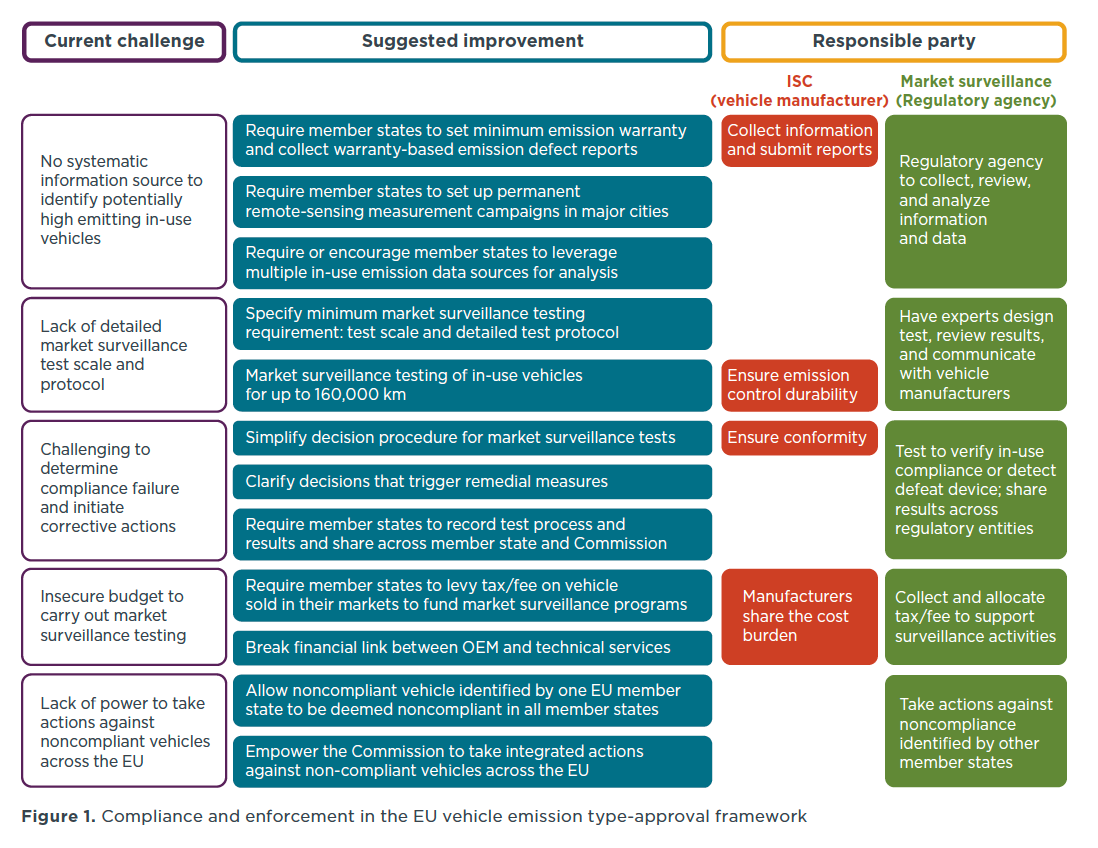Proposed new type-approval system for motor vehicles in the European Union
Briefing
Market surveillance of vehicle emissions: Best-practice examples with respect to the European Commission's proposed type-approval framework regulation
On January 27, 2016, the European Commission (EC) proposed a new motor vehicle type-approval framework that will, if adopted, make fundamental and far-reaching changes to the existing Framework Directive (Directive 2007/46/EC). Among other improvements, the proposal requires EU member states to establish market surveillance programs.
There are four elements of the proposal that pertain to market surveillance with the aim of strengthening the EU’s in-use vehicle compliance program:
- Require EU member states to perform market surveillance testing of vehicles
- Grant EU member states the authority to take measures against noncompliant vehicles sold in their own markets
- Create an EU wide advisory body called the Forum for Exchange of Information on Enforcement
- Require the EU member states to establish a national fee levied on the manufacturers that would cover the costs of market surveillance activities
Although the proposed framework reflects a desire to improve market surveillance in the EU, in its current form, it lacks detail and offers insufficient guidance to regulators that could reduce its potential impact. The market surveillance requirements in any new type-approval framework should be improved, based on a set of compliance and enforcement best practices developed by the ICCT, in the following ways to ensure a full and comparable implementation in all member states:
- Implement fleet screening to identify potentially noncompliant vehicle models
- Specify market surveillance testing scale and protocol
- Clarify the threshold for failure and requirements for remedial actions
- Enhance financial sustainability of market surveillance programs
- Harmonize noncompliance determination and enforcement actions throughout the EU

